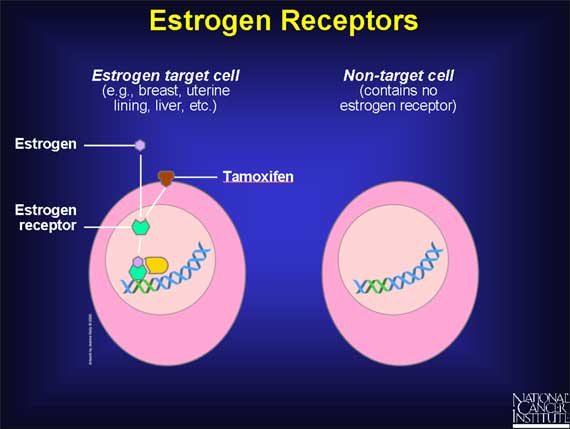|
Estrogens act on target tissues by binding to parts of cells called estrogen receptors.
An estrogen receptor is a protein molecule found inside those cells that are targets for estrogen action. Estrogen receptors contain a specific site to which only estrogens (or closely related molecules) can bind.
The target tissues affected by estrogen molecules all contain estrogen receptors; other organs and tissues in the body do not. Therefore, when estrogen molecules circulate in the bloodstream and move throughout the body, they exert effects only on cells that contain estrogen receptors.

< Previous | Index | Next Slide > |